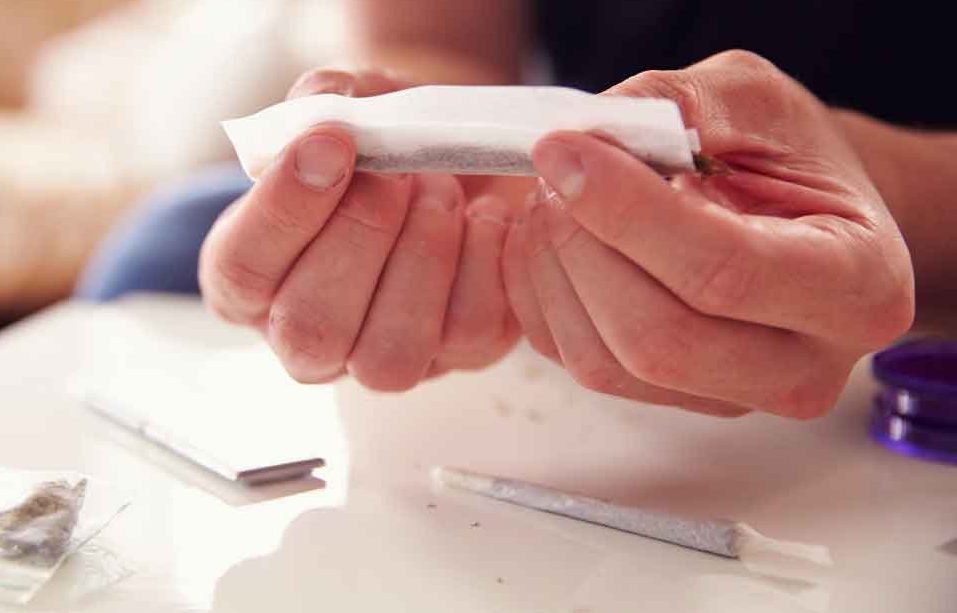Americans Are Smoking More Pot

Marijuana is increasingly legal across America — but the public health consequences aren't yet known. Here's what you should know about the health concerns.
Since Colorado and Washington became the first states to legalize adult recreational use of marijuana (cannabis) a decade ago, many other states have followed suit, bringing the total close to half. For about half of Americans, pot is another option for fun on a Saturday night or a way to unwind at home.
(You can see details about your state’s laws here. For details on medical use by state, check here.)
In some areas, you have a choice among a wide range of products at neighborhood stores. That doesn’t mean pot is harmless, however. Alcohol and cigarettes are far from harmless as well, but they’re easy to get.
YOU MIGHT ALSO LIKE: The Dangers of Synthetic Marijuana
Early 20-somethings are more at risk
As researchers from Johns Hopkins in Baltimore noted, frequent use, especially of high-potency cannabis products, can raise the risk of psychiatric illness, which often first emerge in the early 20s. One study puts the risk of smoking marijuana and showing symptoms of mental illness at 12 percent.
It may surprise you to hear that the increased risk since legalization doesn’t seem to be among teenagers. Teens are less likely to smoke, abuse alcohol, and use illegal drugs than in the past, with rates at surprising lows. And despite the popularity of vaping pot, marijuana use has remained stable.
But use among 19- to 22-year-olds has steadily increased. About 13 percent of them who aren’t enrolled in college use pot daily, according to a national study.
Many people in that age group use marijuana and drink at the same time or on the same occasion. Alcohol may increase the absorption of THC, the psychoactive chemical found in marijuana. Higher THC potency is linked to a higher risk of a psychotic break or developing a disorder.
Nearly three of 10 adult marijuana users meet criteria for a disorder, which are increasing, according to research led by Deborah H. Hasin, PhD, professor of epidemiology at Columbia University in New York. “Marijuana is not a harmless drug,” she said, citing an increased risk for cognitive decline, car crashes, emergency department visits, and use of other drugs.
One big risk is driving. Although the effects are less dramatic than with alcohol, marijuana impairs driving performance. So far, research suggests there’s been a slight increase in fatal crashes in Colorado and Washington since legalization, compared to states with no change in their laws.
Another vulnerable group are adults with disabilities, who are more likely to use pot than other adults. That includes some 13 percent of pregnant women with disabilities, who reported using marijuana during the past month, compared to only 4 percent of pregnant women without disabilities.
Does pot manage anxiety?
Cannabis use is consistently two to three times higher among people with anxiety than other adults, and it’s increasing faster in that group. But there’s a catch. High doses of THC, the active chemical of marijuana, tend to increase anxiety. Meanwhile, CBD, a compound called cannabidiol found in marijuana that doesn’t produce a high, is calming.
But users can’t predict their response to THC on any given day. It may “turn up the volume on everything,” including your anxiety. Cannabis has a broad effect on your brain — more so than opioids or cocaine — which can lead to a wide array of reactions, notes Judy Grisel, author of “Never Enough: The Neuroscience and Experience of Addiction.”
Are you addicted to pot?
Ask yourself whether any of the following are true during the past 12 months:
- You used pot in larger amounts or for more time than you intended.
- You tried to, or wished you could, cut back but can’t.
- You spend a lot of time getting pot, using it, or recovering from use.
- You crave it.
- Your use has made you fail at work, school, or home.
- Your use is causing social or family problems or problems with your partner.
- You have given up other activities.
- You need more to get the desired effect or to relieve withdrawal.
If you answered yes to any three of those questions, you have a mild disorder. An answer of yes to four to five suggests a moderate disorder, and six a severe one.
What you can do
If you use pot to manage your anxiety, but you’re now having other problems, look for other options.
You may need:
- More exercise
- Less coffee or sugar
- More sleep
- More support
- Time with loved ones
- A solution to an ongoing problem at work or home
- Psychotherapy or an antidepressant
It’s also important to know that there’s not enough research yet on the effects of secondhand pot smoke. But early evidence indicates that it may have effects similar to secondhand tobacco smoke, including increased blood pressure and reduced heart function.
Updated:
September 19, 2023
Reviewed By:
Christopher Nystuen, MD, MBA and Janet O'Dell, RN